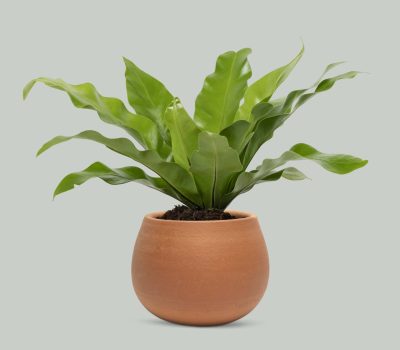Project Report For Plant Pot
Introduction
Project Report For Plant Pot Is As Follows.
A flowerpot, planter, planterette, or plant pot is a container in which flowers and other plants are grown and displayed. Traditionally, as well as to some extent even today, they are constructed of plain terracotta with no ceramic glaze, in a spherical form tapering inwards. Plastic, metal, wood, stone, and biodegradable materials are increasingly often used to make flowerpots.
Biodegradable pots are those constructed of heavy brown paper, cardboard, or peat moss in which immature plants for transplanting are cultivated. Pots for seedling beginning in commercial greenhouses or polytunnels are often in the shape of trays with cells, with each cell functioning as one little pot. Flats are another name for these trays.
Water in high pot soil is drawn down faster by gravitational forces than water in low pot soil, therefore the soil does not stay moist for long. This is significant since most plant roots require not only water, but also air (oxygen).
If the potting soil is overly damp, plants may suffer from a lack of oxygen around the roots. The soil in black pots exposed to sunshine will warm up faster than dirt in white pots. Because clay pots are porous to water, water from the soil within the pot can evaporate through the walls and out of the pot. Evaporation losses are reduced in glazed or plastic pots. Plants may suffer if there are no holes at the bottom.

Types Of Plant Pot
Terracotta Pots: These pots are manufactured from baked clay and are recognised for their porous nature, which provides for greater ventilation and drainage. Terracotta pots are ideal for plants that prefer dry soil conditions since they avoid overwatering.
Ceramic Pots: Ceramic pots are made of clay and then burned at high temperatures. They come in a variety of colours, sizes, and patterns, making them ideal for ornamental reasons. Ceramic pots are useful for insulating, storing moisture, and creating a stable habitat for plants.
Plastic Pots: Plastic pots are lightweight, inexpensive, and long-lasting. They are available in a variety of sizes and colours, and many feature built-in drainage holes. Plastic pots are simple to clean and move, making them an ideal choice for both indoor and outdoor gardening.
Hanging Baskets: Hanging baskets are suspended from hooks or brackets and are great for trailing or cascading plants. They are often formed of materials such as plastic, metal, or woven materials such as wire or wicker. Hanging baskets offer a vertical aspect to garden settings and are frequently used to display vivid flowering plants.
Get Completely Custom Bankable Project Report
Market Potential Of Plant Pot
At a predicted growth of $1.5 billion by 2030 and a CAGR of 4.3% between 2021 and 2030, the market for flower pots and planters was valued at $978.70 million in 2020.
Consumers’ lifestyles are improving dramatically, particularly in metropolitan regions, as disposable money rises. Furthermore, as building activities increase and customers’ opulent lifestyles improve, the need for flower pots and planters rises, since they have become a vital component of modern lifestyles.
Furthermore, an increase in willingness to spend more on home décor items such as flower pots and planters is expected to provide lucrative prospects for the worldwide market’s development, as these products improve the aesthetic aspect of houses and home gardens. Thus, lifestyle advancements are likely to give new development possibilities for participants in the worldwide flower pots and planters market.
Increasing public knowledge of environmental issues encourages people to adopt greener practices, which gives rise to the use of flower pots. The abundance of diverse raw materials such as steel, ceramic, clay, and wood assists flower pot makers in designing flower pots and supplying the flower pot industry.
The worldwide flower pot market is flourishing due to leading industry players’ cost-effective production and lightweight design of pots. The increasing demand for organic and chemical-free fruits and vegetables encourages the use of more flower pots, which grows the flower pot business.

